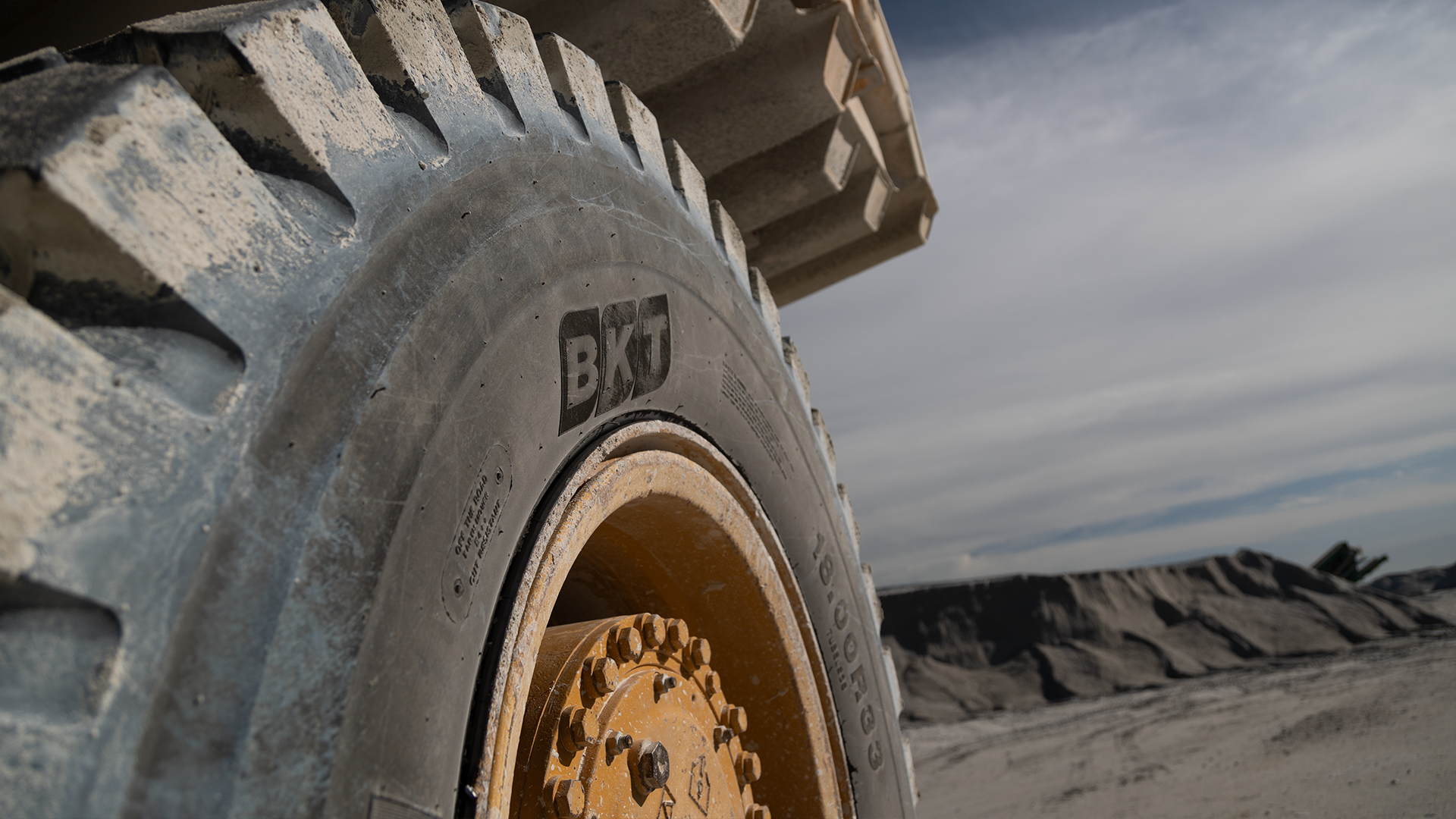The technology behind construction machinery is undergoing a major transformation, driven by the rise of electrification. However, we are not talking specifically about engine electrification — a hot topic in the industrial off-highway sector over the past few years — but rather about the electrification and replacement of traditional "bars" with "kWh" in the components used to control working tools. Since the early days of construction mechanics, hydraulic actuators have been the backbone of earthmoving equipment, capable of delivering the torque and control needed to carry out different machine functions. Today, though, electric actuators are emerging as a strong alternative, offering efficiency, precision, and environmental benefits. The key question is whether the advantages of electric actuators in construction machinery can be applied across all types of activities and operational scales, or if there are still limitations — and what the future holds for this technology.

The Shift to Electrification: A Natural Process
The transition towards electrification in industrial machinery is not a recent development. In the construction sector, it has been underway for at least a decade. From the outset, it has been driven by demands for greater efficiency, higher sustainability, and continuous technological progress. Today, all major manufacturers of earthmoving machines, along with research institutes and universities, are exploring alternatives to traditional hydraulic systems to improve overall machine performance and reduce environmental impact. The adoption of electric actuators represents a fundamental shift in how construction machinery operates, with the potential to redefine industry standards.
How Electric Actuators Work on Earthmoving Machinery
Electric actuators play an essential role in modern construction equipment by converting electrical energy into mechanical movement. They handle critical tasks like controlling hydraulic arms, positioning buckets, and adjusting blades, all while improving precision and operational efficiency. An electric actuator consists of several main components. The electric motor, the core of the system, is usually powered by either direct current (DC) or alternating current (AC), depending on the application. Brushless motors are often preferred for their longer service life and reduced maintenance needs. The gearbox reduces the motor’s speed while increasing torque output and may use planetary gears, worm gears, or traditional gear mechanisms, depending on requirements. Rotational movement from the motor is transformed into linear motion through a drive system, typically involving ball screws or rack-and-pinion setups, especially when high precision and low energy losses are essential. For fine control, electric actuators are equipped with position sensors such as encoders or potentiometers, providing constant feedback to the control system. The entire setup is managed by an electronic controller that regulates power and command signals, often using communication protocols like CAN-Bus, which are standard in construction machinery. To withstand harsh construction site conditions, actuators are built into sealed housings that protect them from dust, debris, and weather elements. Operation happens sequentially: the machine's central system sends a control signal, whether from a joystick, onboard computer, or remote controller. This signal activates the electric motor, which, through the gearbox and drive system, generates the required movement — either linear or rotational. Integrated sensors monitor the movement in real time, ensuring precise positioning and enabling the system to make corrections as needed, even under varying loads. Some models also feature advanced safety mechanisms like electromagnetic brakes, which lock the actuator in case of malfunction.
The Advantages of Electric Actuators
One of the most significant advantages of electric actuators is their efficiency. Hydraulic systems can suffer considerable energy losses due to fluid resistance and leakage. Studies have shown that electric actuators can nearly double the efficiency of construction equipment compared to traditional hydraulic systems. This translates into better energy management, lower consumption, and longer battery life for electric machines. Another major benefit is reduced environmental impact. Since electric actuators eliminate the need for hydraulic fluid, they also eliminate the risk of leaks and spills that can cause mechanical damage and environmental contamination. This makes machines more reliable and eco-friendly, reducing hazardous waste and cutting down on carbon emissions. At the same time, the absence of hydraulic fluids lowers maintenance needs and associated costs. Noise reduction is another advantage. Construction sites are notoriously noisy, and hydraulic systems contribute significantly to that. Electric actuators help reduce overall machine noise by eliminating the need for hydraulic pumps and associated components. Lower noise levels create better working conditions for operators and help minimize disruption in urban construction projects.

Precision and Operational Feedback
Electric actuators offer superior precision and control compared to hydraulic systems. They provide real-time feedback on position and load, allowing for more accurate movements and reducing operator fatigue. This level of control is particularly valuable in applications that require fine adjustments and complex maneuvers, such as grading, excavation, and lifting operations. Moreover, integrating electric actuators into construction machinery enables new features that were difficult to achieve with hydraulic systems. Automatic bucket leveling or load feedback mechanisms, for example, can significantly boost both safety and operational efficiency. Operators can even customize machine responsiveness to match their skill level and the specific demands of the job.

The Limitations of Electronics
Despite their many advantages, electric actuators still face some challenges that limit their widespread adoption in construction machinery. One of the main issues is the ability to generate high breakout or lifting forces. While electric actuators perform well in compact and mid-sized machines, larger construction equipment still relies heavily on hydraulic cylinders, which are capable of delivering significantly higher force levels. This remains a critical hurdle that must be overcome before electric actuators can fully replace hydraulics in heavy-duty applications. Another challenge concerns the size of electric actuators, which tend to occupy more space than hydraulic cylinders. This is mainly because they require separate motors and additional components to function properly. The larger footprint of electric actuators poses a design challenge, especially for machines originally developed with compact hydraulic systems in mind. At present, electric actuator technology is also more expensive compared to traditional hydraulic solutions. High costs are mainly due to the complexity of the components and the need for advanced electronics to manage their operation. However, as demand grows and manufacturing processes improve, prices are expected to decrease, making them increasingly accessible.
Examples of Applications in Earthmoving Machinery
Electric actuators are driving a real revolution in the construction industry, finding their way into machines like excavators, skid steers, and front loaders. Here are a few surprising applications that, until recently, seemed out of reach but are now enhancing operational capabilities and machine control. Let’s take a closer look!

Throttle Valve Control on Wheeled Excavators
Electric actuators for throttle valves optimize engine speed, reducing noise, emissions, and fuel consumption. They deliver economic benefits through lower design, installation, and operating costs, thanks to flexible designs and durable components. They also enhance safety and operator comfort by integrating with seat lockout systems and minimizing operator fatigue. Additionally, they boost productivity by automatically adjusting speed and optimizing fuel efficiency.
Quick-Attach Actuators on Skid Steers
Quick-attach electric actuators allow operators to switch attachments without leaving their seat, greatly increasing efficiency and safety. They bring major advantages, including lower design and installation costs by eliminating the need for complex hydraulic systems. Operating costs are also reduced with maintenance-free designs and no high-wear hydraulic hoses. Safety improves by removing high-pressure hydraulic lines from the cab, and productivity rises as attachment changes become faster and easier.
Simplified Hood Openings
Electric hood actuators make engine access safer and more convenient. They reduce design, installation, and operating costs by simplifying the system compared to hydraulic alternatives. Built to withstand shocks and extreme temperatures, they prevent accidental operation and minimize risks for operators. They also enhance productivity by enabling easy hood opening, even when the battery is low.
.png)
Taking Control of Valves
Electric actuators are replacing mechanical linkages in spool valves, improving both ergonomics and efficiency. They lower design, installation, and operating costs by offering greater flexibility in component placement and requiring less maintenance. Moreover, they increase safety and productivity by integrating advanced locking systems and joystick-based control.
Electric Actuators in Construction: The Next Evolutionary Steps
Rather than an immediate switch to fully electric machines, the industry is likely to move toward a hybrid approach, where electric actuators complement traditional hydraulic systems.This hybridization allows manufacturers to blend the advantages of electric actuators with the powerful force generation capabilities of hydraulics for specific heavy-duty tasks. Growing interest in electric actuators has pushed many component suppliers to develop new solutions tailored specifically for construction machinery. Ongoing research is expected to lead to even more compact, powerful, and cost-effective actuator designs. The benefits of electric actuators extend beyond construction equipment as well, reaching into sectors like agricultural machinery and material handling — including port operations, to give a clear example. Cross-sector adoption of this technology will further drive innovation and standardization, making electric actuators more practical for widespread use. In conclusion, electric actuators are reshaping the construction industry by offering greater efficiency, precision, and sustainability. While there are still some challenges to overcome, the long-term potential of this technology is clear. To stay updated on the latest innovations and insights in this exciting field, keep following our blog!
Advanced Search
Find your tire






.png)